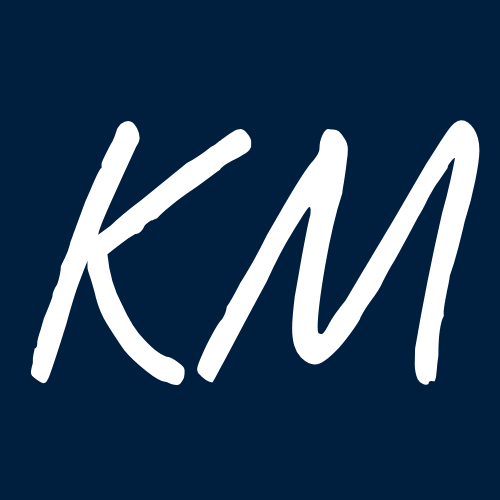TCL#35: Following the Money
Venture capital finds Chemistry, with mixed results.
Investment patterns this week reveal where technology meets materials science, and where it stumbles. Radical AI's $55 million seed round represents Silicon Valley's latest attempt to digitise laboratory work, promising to accelerate materials discovery through machine learning. Whether artificial intelligence (AI) can truly compress decades of chemical research into algorithmic shortcuts remains an open question. Meanwhile, established players are making more modest bets. Air Liquide opens the world's largest molybdenum plant in South Korea, Linde expands gas facilities for commercial space launches, and European hydrogen producer Lhyfe raises €2.5 million through crowdfunding. The contrast is telling, between venture capital's grand promises and industry's incremental progress.
To receive these updates in your inbox, join below. The future rarely announces itself, but patterns do.
Materials

- Radical AI, a technology company using AI to accelerate materials research and development, has secured $55M in seed funding. The round was led by RTX Ventures, with participation from NVentures (NVIDIA's venture arm), and noa among others. Radical AI is focused on building a fully integrated system that treats a material's digital footprint, physical creation, and real-world performance as a continuous stream of intelligence. The company seeks to reconstruct the scientific method, moving from a linear, human-driven process to a parallel, AI-driven approach. The company's AI models will synthesize insights from scientific literature, computational models, and experimental data simultaneously, aiming to achieve a scale of comprehension beyond human capability.
- Numat Technologies, a company that develops precision chemistry platform for capturing hazardous chemicals, has formed a Defense Advisory Board comprised of veteran leaders from the U.S. Army, Air Force, and Marine Corps. The advisory board aims to accelerate the deployment of Metal-Organic Frameworks (MOF)-enabled technologies in defense applications, including advanced protective fabrics and Reactive Garment Uniforms. The goal is to replace legacy protective garments with highly protective, breathable, and self-detoxifying materials.
- Air Liquide has launched the world's largest Molybdenum manufacturing plant in Hwaseong, South Korea. The plant will supply advanced materials for next-generation semiconductors, including ultra-high purity molybdenum molecules and proprietary distribution systems. Molybdenum is being implemented in advanced designs by integrated device manufacturers (IDMs) as a replacement for tungsten in chip manufacturing. Tungsten interconnects in DRAM (fast but temporary storage) and 3D NAND (used in solid-state drives for long-term storage) may be reaching their limit, with molybdenum emerging as the probable replacement.
Battery

Estes Energy Solutions, a materials and manufacturing company based in San Francisco, has raised $11 million in seed funding. The round was co-led by BMW i Ventures and Fortescue with participation from new investor New System Ventures and follow-on investment from DCVC. This brings Estes' total funding to $20 million, which will support the development of their multi-chemistry battery pack platform that is chemistry-agnostic and the launch of U.S.-based manufacturing operations.
Aviation Fuel
Sasol has committed to supplying next-generation catalysts to INERATEC, a German clean tech company established in 2016 that produces sustainable e-fuels and synthetic chemicals to replace fossil crude oil. The new catalyst, based on Sasol's proprietary Fischer-Tropsch know-how, will increase production capacity and improve e-kerosene yield by 15%. INERATEC operates he largest Power-to-Liquid (PtL) facility, ERA ONE, with an annual production target of up to 2,500 tons of sustainable e-Fuels.
Space Exploration
Linde is making key US investments to bolster commercial space operations.
- Linde is expanding its industrial gases facility in Mims, Florida, to support rocket launches at nearby space facilities, with additional capacity expected to start up in the first quarter of 2027.
- Linde will build, own, and operate a new air separation unit (ASU) in Brownsville, Texas, expected to start up in the first quarter of 2026, to support space operations and expand merchant capacity across Texas.
Linde has been involved in space exploration for over 60 years, providing critical gases for various applications, including rocket launches, satellite propulsion, and spacecraft component testing. In 2024, Linde supported more than 100 successful rocket launches, guaranteeing the reliability of critical systems and components.
Energy
- Brooklyn-based Amogy has partnered with GreenHarvest, a renewable energy firm based in Taiwan, to deploy the first ammonia-to-power system in Taiwan. The system is scheduled for installation between late 2026 and early 2027 at a large industrial facility in Taiwan, with scalability across the islands high-tech and manufacturing sectors. Amogy's system converts ammonia into hydrogen on-site using advanced catalyst materials, which is then used in a hydrogen engine to generate zero-carbon power.
- Kimberly-Clark UK & Ireland has announced an investment of £125 million (~$167 million) in green hydrogen projects, partnering with Carlton Power and HYRO at its facilities in Cumbria and Kent. This initiative aims to reduce natural gas consumption by 50% at UK manufacturing sites from 2027 and lower carbon emissions by 28,500 tonnes per year.
Hydrogen Production
Lhyfe, a European group founded in 2017 that specializes in producing and supplying green and renewable hydrogen for the mobility and industry markets, raised €2.5 million (~$2.9 million) through a crowdfunding campaign. This involved nearly 1,200 investors, with individual investments ranging from €300 to €75,000. The funds are earmarked for four hydrogen sites in France and Germany.

